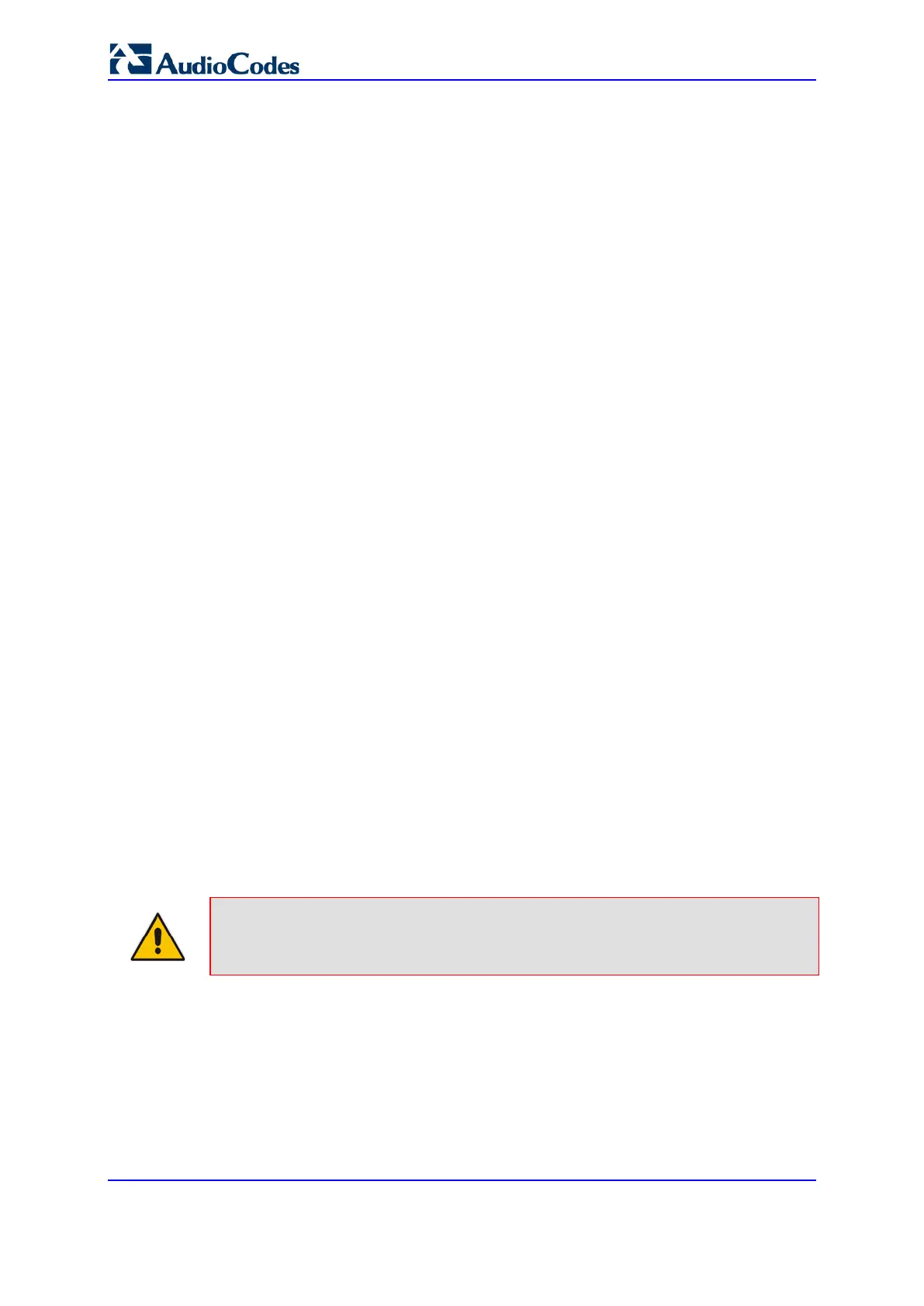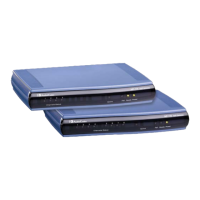User's Manual 548 Document #: LTRT-27045
Mediant 1000B Gateway & E-SBC
QSIG MWI: The device supports the interworking of QSIG MWI to IP (in addition to
interworking of SIP MWI NOTIFY to QSIG Facility MWI messages). This provides
interworking between an ISDN PBX with voice mail capabilities and a softswitch,
which requires information on the number of messages waiting for a specific user.
This support is configured using the TrunkGroupSettings_MWIInterrogationType
parameter (in the Trunk Group Settings table), which determines the device's handling
of MWI Interrogation messages. The process for sending the MWI status upon request
from a softswitch is as follows:
1. The softswitch sends a SIP SUBSCRIBE message to the device.
2. The device responds by sending an empty SIP NOTIFY to the softswitch, and
then sending an ISDN Setup message with Facility IE containing an MWI
Interrogation request to the PBX.
3. The PBX responds by sending to the device an ISDN Connect message
containing Facility IE with an MWI Interrogation result, which includes the number
of voice messages waiting for the specific user.
4. The device sends another SIP NOTIFY to the softswitch, containing this MWI
information.
5. The SIP NOTIFY messages are sent to the IP Group defined by the
NotificationIPGroupID parameter.
When a change in the status occurs (e.g., a new voice message is waiting or the user
has retrieved a message from the voice mail), the PBX initiates an ISDN Setup
message with Facility IE containing an MWI Activate request, which includes the new
number of voice messages waiting for the user. The device forwards this information
to the softswitch by sending a SIP NOTIFY.
Depending on PBX support, the MWIInterrogationType parameter can be configured
to handle these MWI Interrogation messages in different ways. For example, some
PBXs support only the MWI Activate request (and not MWI Interrogation request).
Some support both these requests. Therefore, the device can be configured to disable
this feature or enable it with one of the following support:
• Responds to MWI Activate requests from the PBX by sending SIP NOTIFY MWI
messages (i.e., does not send MWI Interrogation messages).
• Send MWI Interrogation message, but don't use its result. Instead, wait for MWI
Activate requests from the PBX.
• Send MWI Interrogation message, use its result, and use the MWI Activate
requests.
26.9 Caller ID
This section describes the device's Caller ID support.
Note: The Caller ID feature is applicable only to FXS/FXO interfaces.
26.9.1 Enabling Caller ID Generation and Detection on Tel Side
The device's Caller ID support depends on the type of analog interface:
FXS interfaces: The device sends (generates) the Caller ID signal to the device's FXS
port.
FXO interfaces: The device detects the Caller ID signal from the FXO port.

